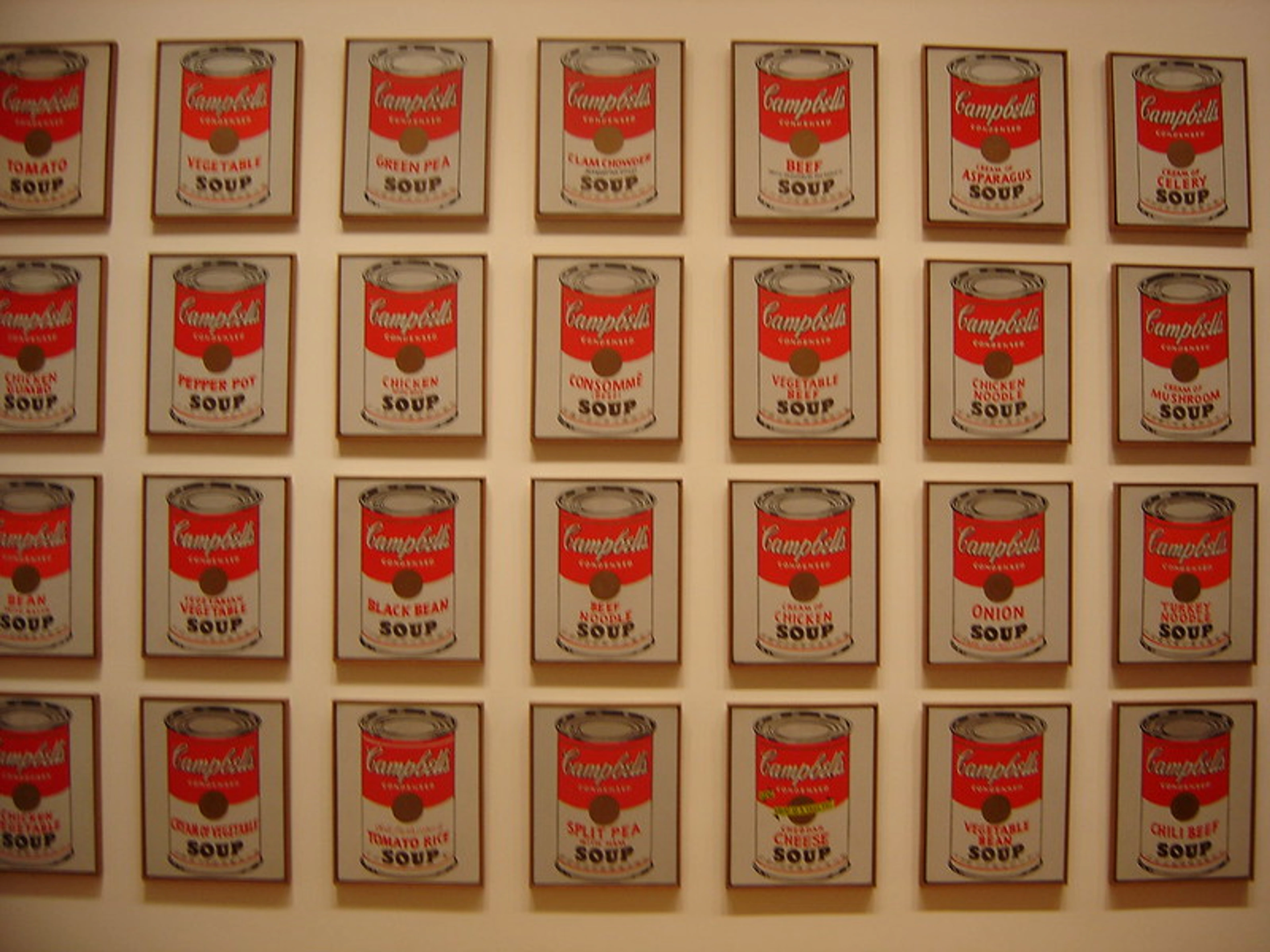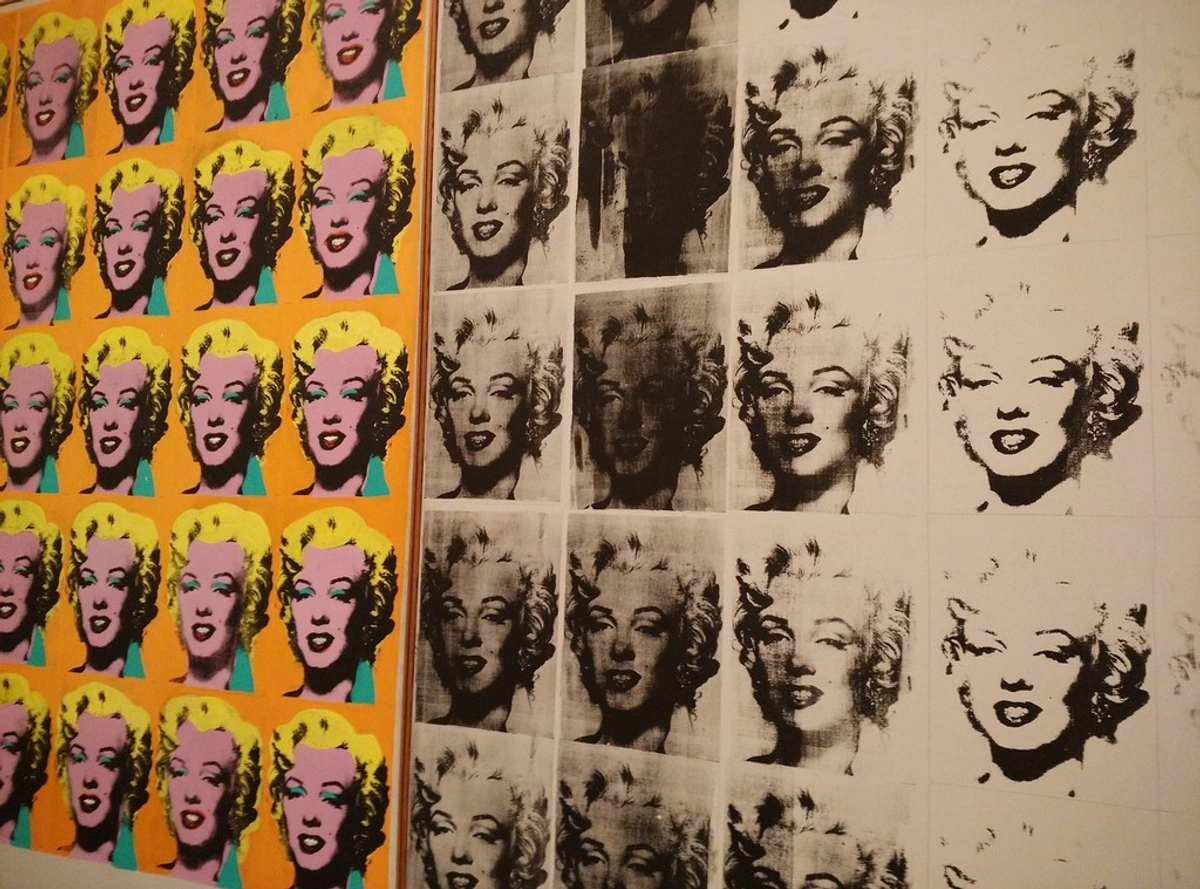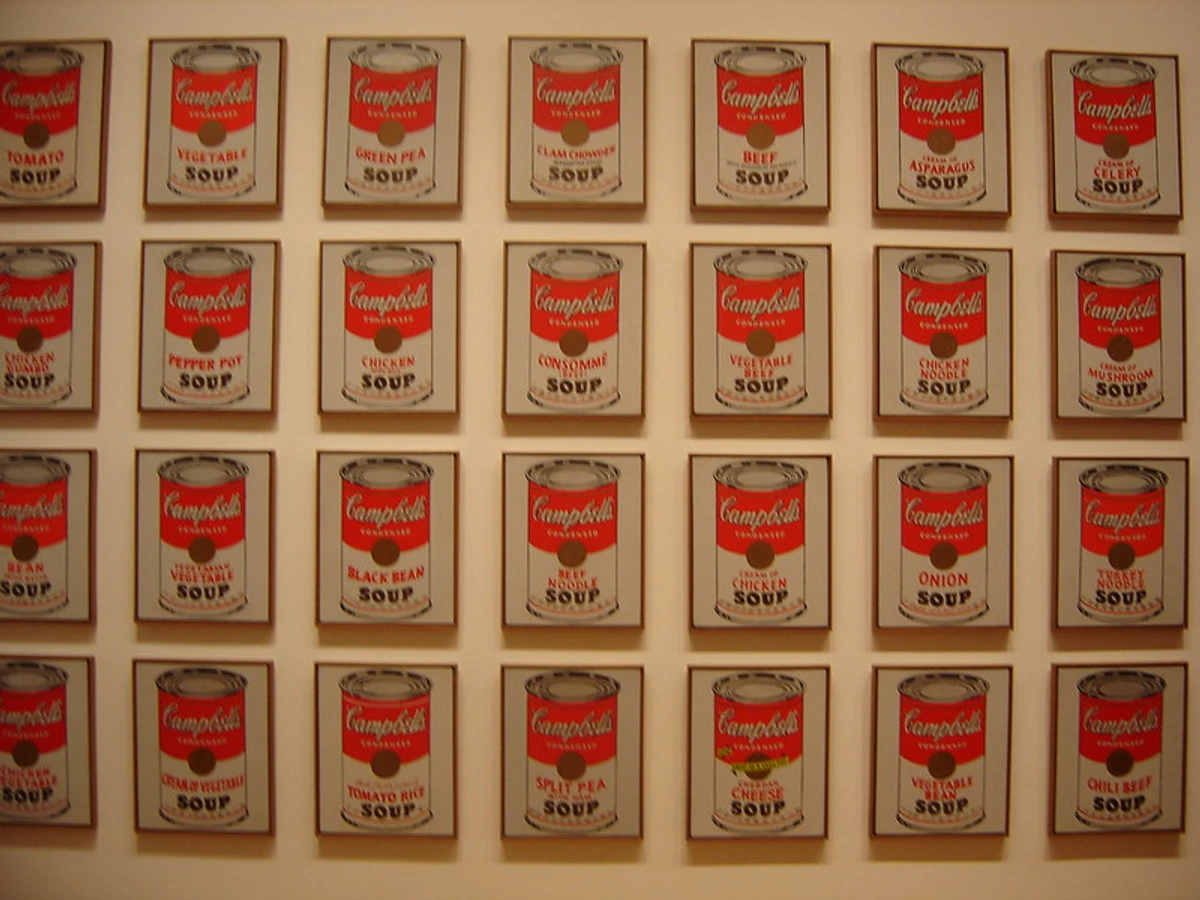
Andy Warhol: An Artist's Ultimate Guide to Pop Art, The Factory & Legacy
Dive into the world of Andy Warhol with an artist's personal take. Explore his Pop Art revolution, The Factory, films, music, business art, and lasting legacy.
The Ultimate Guide to Andy Warhol: More Than Just Soup Cans
Let's talk about Andy. Not just the guy who painted soup cans and Marilyn, but the phenomenon, the disruptor, the shy genius who became the ringmaster of the most vibrant, chaotic, and utterly fascinating scene in 20th-century art. For me, diving into Warhol is like stepping into a time machine – it's loud, it's colorful, and it makes you question everything you thought you knew about art, fame, and commerce. It's a world that feels both alien and strangely familiar, like looking at our own media-saturated reality through a funhouse mirror. It makes me think about how artists today navigate the tension between creative vision and the need to make a living, a balance Warhol tackled head-on. It's a journey I'm still on myself (explore my own journey), and seeing how he embraced the commercial side makes me reflect on my own path (see my art for sale).
I remember the first time I saw a Warhol print up close. It wasn't in a fancy gallery; it was in a friend's slightly dusty apartment. A simple, repeated image, maybe a flower or a celebrity portrait. And yet, there was something undeniably there. It wasn't just the image; it was the repetition, the slight imperfections, the sheer presence of it. It felt both mass-produced and deeply personal, which, as I'd come to learn, is the absolute core of Warhol.
So, if you've ever wondered about the man behind the myth, or if you just want to understand why those soup cans are in museums, stick around. This is my personal journey through the world of Andy Warhol, and hopefully, it'll spark something in you too.
Who Was Andy Warhol, Anyway? The Shy Kid from Pittsburgh
Born Andrew Warhola in Pittsburgh in 1928, Andy was a sickly, shy kid from a working-class immigrant family. His childhood was marked by illness, including chorea, which left him withdrawn and fascinated by celebrity culture and collecting. This early fascination with popular culture and fame would, of course, become his life's work. His mother, Julia Warhola, a talented folk artist herself, encouraged his artistic leanings from a young age, providing him with his first art supplies and nurturing his creative spirit. Pittsburgh's industrial landscape, with its factories and mass production, also subtly seeped into his consciousness, foreshadowing his later themes. It's also worth noting his family's devout Byzantine Catholic faith; while Warhol wasn't overtly religious later in life, the visual language of icons and the concept of repetition inherent in religious imagery may have subtly influenced his later artistic approach to celebrity and mass production. It makes you wonder how much our earliest visual experiences shape our creative paths, doesn't it?
He moved to New York City in 1949 and quickly found success as a commercial illustrator. He was good, really good, with a distinctive blotted-line technique that gave his drawings a unique, delicate quality. This technique involved drawing in ink on paper, then pressing the wet ink onto another piece of paper, creating a slightly offset, imperfect duplicate line. It was a way to achieve a hand-drawn look that could still be reproduced with variations, a precursor to his later interest in mechanical reproduction and repetition. He designed shoes for I. Miller, illustrated ads for magazines like Glamour and Harper's Bazaar, and created whimsical illustrations for album covers and book jackets. His early commercial work for clients like Tiffany & Co. was incredibly successful, earning him high fees and numerous industry awards throughout the 1950s. It showcased his ability to blend artistic flair with commercial appeal, making him a highly sought-after name in the commercial art world. But despite this success, he wanted more. He wanted to be a fine artist, to be in galleries, to be famous.
This is where the story gets interesting. Instead of trying to fit into the prevailing art scene – dominated by the likes of the Abstract Expressionists (artists focused on expressing emotion through abstract forms, a world away from soup cans!) – Warhol looked outwards, to the world around him. To the things people saw and consumed every day. It was a bold pivot, one that would redefine the art landscape and challenge the very definition of what art could be. It makes me think about how many artists feel this pull – the desire for recognition versus the pressure to conform. Warhol just decided to redefine the game entirely.
The Birth of Pop Art (and Warhol's Reign)
Pop Art was a reaction, a mirror held up to the burgeoning consumer culture of the 1950s and 60s. It took inspiration from advertising, comic books, and everyday objects. Think about it – post-war America was booming, mass media was exploding, and consumer goods were everywhere. Warhol didn't just see products; he saw icons. While artists like Roy Lichtenstein and Claes Oldenburg were also key figures, and precursors like the Independent Group in the UK or American artists like Jasper Johns and Robert Rauschenberg paved the way, Andy Warhol didn't just participate in it; he became its undeniable king.
He started painting things like Campbell's Soup Cans, Coca-Cola bottles, and Brillo Boxes. Things you'd find in any supermarket. At first, the art world was baffled, even dismissive. Was this art? Or just... groceries? But that was the point. Warhol was blurring the lines between high art and low culture, between the unique masterpiece and the mass-produced commodity. It felt almost like a joke, but the punchline was on the art establishment itself. So, why are those soup cans in museums? Because Warhol, with a wink and a screen print, forced the art world to confront its own definitions of value, originality, and what is worthy of being called 'art'. He showed that art could be about the world we actually live in, not just some elevated, distant realm. It makes you wonder, what everyday objects around us today could become icons? (Speaking of icons, check out some famous art that redefined things).
Iconic Works: More Than Just Soup and Stars
While the soup cans are perhaps his most instantly recognizable works, Warhol's portraits of celebrities cemented his place in the cultural zeitgeist. Using the screen-printing technique he adopted, he could reproduce images quickly, playing with color and repetition.

This technique was revolutionary for fine art at the time because it moved away from the traditional emphasis on the artist's unique brushstroke and embraced mechanical reproduction, directly tying into his themes of mass production and de-emphasizing the artist's hand. It was perfect for his themes of mass production and celebrity – turning people into repeatable icons, much like the products he also depicted.

His portraits of Marilyn Monroe, Elizabeth Taylor (Liz), Elvis Presley, and others weren't just likenesses; they were explorations of fame itself. By repeating the images, sometimes with slight variations or fading colors, he seemed to comment on the way media consumes and reproduces celebrity, turning people into products. His portraits of figures like Mao Zedong also explored themes of political power and mass imagery.

Beyond the soup and stars, Warhol explored a wide range of subjects, often using repetition and mass production as core elements. Works like the Cow Wallpaper or the Brillo Box sculptures further blurred the lines between fine art and everyday commodities. His Death and Disaster series, for instance, tackled darker themes like electric chairs (Electric Chair), car crashes (Orange Car Crash), and suicides, often using repeated images from newspapers. This series, while starkly different in subject matter from the bright Pop icons, was another facet of his fascination with media and repetition, highlighting how even tragedy becomes a repeatable image in the news cycle, potentially leading to desensitization. It showed a more somber, critical side to his work, forcing viewers to confront uncomfortable realities presented with the same detached, repetitive style as a soup can. Even his Flowers series, while seemingly purely aesthetic, played with repetition and mass production, questioning traditional notions of beauty and originality. And let's not forget his Self-Portraits, turning his own image into a repeatable commodity, or his later Last Supper series, which brought religious iconography into the Pop realm, perhaps a subtle nod to his own background.
Here are a few other notable works:
Work Title | Subject Matter | Technique/Notes |
|---|---|---|
| Campbell's Soup Cans | 32 different soup flavors | Screen printing; systematic, iconic representation of everyday consumer product. |
| Marilyn Diptych | Marilyn Monroe | Screen printing; repetition and color variation exploring fame and mortality. |
| Electric Chair | Electric chair | Screen printing; part of the Death and Disaster series, commenting on media and desensitization. |
| Mao | Mao Zedong | Screen printing; exploring political power and mass imagery. |
| Flowers | Hibiscus flowers | Screen printing; repetition and bold color applied to a traditional subject. |
| Cow Wallpaper | Cow heads | Screen printing; decorative art, mass production. |
| Brillo Box | Brillo Soap Pad boxes | Sculpture (silkscreen ink on wood); directly challenging the definition of art and originality by replicating a commercial product box. |
| Self-Portraits | His own image | Screen printing; turning the artist into a repeatable icon/commodity. |
| The Last Supper | Religious scene | Various techniques; bringing religious iconography into the Pop context, often with commercial logos or repeated imagery. |
Silver Walls and Superstars: Life at The Factory
If Warhol was the ringmaster, The Factory was his circus tent, his laboratory, his social hub, and his production line all rolled into one. Located in various spots in New York City throughout the 60s, 70s, and 80s (the famous silver-painted studio on East 47th Street, followed by locations on Union Square West and Broadway), The Factory was where the magic (and sometimes the madness) happened. Imagine a place buzzing with energy, filled with silver paint, loud music, and an endless stream of fascinating, eccentric, and sometimes troubled people. It was an open house for artists, musicians, socialites, drag queens, drug users, and anyone else who was interesting, beautiful, or just wanted to be near the center of the action. It was a place where boundaries blurred – between art and life, work and party, celebrity and anonymity. Honestly, trying to get any actual work done in that chaos must have been an art form in itself! It makes me think about the energy of collaborative spaces, how they can fuel creativity but also become overwhelming. (Speaking of creative spaces, exploring different types of artwork often reveals the environment they were made in).
Here, Warhol churned out his screen prints with the help of assistants (reinforcing his idea of art as a product, made like in a factory), but it was also a place for filmmaking, music recording, parties, and endless conversations. Beyond the famous screen prints, The Factory was a hub for experimental media. Warhol filmed hundreds of his famous Screen Tests here – simple, silent, black-and-white film portraits of visitors, capturing their raw presence for a few minutes. Films like Chelsea Girls (1966), a split-screen projection showing simultaneous, unscripted scenes from the lives of Factory regulars, were also produced here, pushing the boundaries of narrative and form. Key figures like Edie Sedgwick (a socialite who became one of his "superstars"), Gerard Malanga (his printmaking assistant and collaborator), Ultra Violet, and members of The Velvet Underground were regulars. It was a melting pot of creativity and counterculture, a place where Warhol, despite his shyness, could observe, direct, and produce prolifically.
Beyond the Canvas: Film and Music
Warhol wasn't content to stay within the confines of painting. He was fascinated by media in all its forms, and film became a major obsession in the 1960s. His films were often experimental, minimalist, and deliberately challenging to conventional cinema. Think Empire (an eight-hour static shot of the Empire State Building) or Sleep (a five-hour film of a man sleeping). These weren't blockbusters; they were explorations of time, boredom, and the act of watching itself. They pushed boundaries and, like his paintings, questioned what art could be. As mentioned, his Screen Tests and films like Chelsea Girls were groundbreaking in their raw, unedited approach, capturing the essence of his Factory scene and challenging traditional filmmaking norms.
He also famously managed and produced The Velvet Underground, the iconic rock band featuring Lou Reed and John Cale. Warhol designed their famous album cover (the one with the banana you could peel!) and integrated them into The Factory scene, often incorporating their performances into his multimedia events like the Exploding Plastic Inevitable. This was a groundbreaking series of events in 1966-67 that combined live performances by The Velvet Underground, Warhol's films projected simultaneously, light shows, and dancing. It was a total sensory immersion, a true multimedia spectacle that blurred the lines between concert, film screening, and performance art, highlighting Warhol's role not just as an artist but as a curator of experience. It makes me think about how artists today are constantly blending disciplines, from visual art to music to digital experiences. (Art for music lovers is definitely a thing!).
The Assassination Attempt and Its Aftermath
The vibrant, boundary-pushing world of The Factory was violently interrupted in 1968 when a radical feminist writer named Valerie Solanas, who had appeared in one of his films and felt he had too much control over her work, shot Warhol at The Factory. He was severely wounded and barely survived. This event had a profound impact on his life, leaving him with significant physical injuries that required him to wear a surgical corset for the rest of his life. Beyond the physical toll, it also left deep psychological scars, making him more cautious, withdrawn, and paranoid. The carefree, chaotic energy of the early Factory years was, to some extent, lost, and access became more controlled. It's a stark reminder of the vulnerability that can come with public life, even in the seemingly detached world Warhol cultivated.
Business Art: The Art of Making Money
Warhol famously declared, "Making money is art, and working is art, and good business is the best art." He was unapologetic about his commercial success and actively pursued commissioned portraits of wealthy socialites and celebrities in the 1970s and 80s. This era saw him become a sort of society portrait painter, albeit with his signature Pop style. He also launched Interview magazine, a publication focused on celebrity culture, which became another successful commercial venture.
Some critics saw this later period as a decline, a sell-out. But for Warhol, it was a continuation of his core themes – the intersection of art, commerce, fame, and mass production. He treated his art like a business, and his business like art. It was another way he challenged the traditional, often romanticized, idea of the struggling artist detached from the commercial world. He embraced it, exploited it, and made it part of the work itself. It makes me think about my own journey as an artist, navigating the balance between creative passion and the practicalities of making a living. It's a tension every artist faces, and Warhol tackled it head-on, perhaps more explicitly than anyone before him.
Collaborations and Later Work
In his later years, Warhol remained prolific and engaged with the contemporary art scene. He collaborated with younger artists, most notably Jean-Michel Basquiat, whose raw, expressive style contrasted fascinatingly with Warhol's cooler, more mechanical approach. These collaborations produced large-scale works that blended their distinct aesthetics and are now considered significant pieces from both artists' careers.
He continued to produce screen prints, paintings, and drawings, exploring new subjects while revisiting old ones. His work remained relevant, reflecting the evolving media landscape and the increasing obsession with celebrity and consumerism that he had predicted and helped shape.
Warhol's Enduring Legacy
Andy Warhol died in 1987 following gallbladder surgery. His death was unexpected and sent shockwaves through the art world. But his influence, far from diminishing, has only grown.
His legacy is immense and multifaceted:
- He redefined art: He shattered the boundaries between high and low culture, fine art and commercial art. He showed that art could be about everyday life, mass media, and consumerism.
- He changed the role of the artist: He was not just a creator but a director, a producer, a celebrity, and a brand. He understood the power of image and self-promotion long before the age of social media. (Speaking of artists as brands, it's a fascinating modern phenomenon).
- He pioneered new techniques: His use of screen-printing as a fine art medium was revolutionary, emphasizing repetition and mechanical reproduction.
- He commented on modern life: His work holds a mirror to our society's fascination with fame, consumerism, media saturation, and the fleeting nature of celebrity. It feels incredibly relevant today, perhaps even more so than when he was alive.
- He created a cultural phenomenon: The Factory, his films, his magazine, his persona – he built an entire world around his art, influencing not just visual arts but music, fashion, and popular culture as a whole.
Walking through a museum today, you see Warhol's impact everywhere – in the use of everyday objects, the embrace of popular culture, the blurring of disciplines, and the artist's role as a public figure. He was a prophet of our media-obsessed age, and his work continues to provoke, fascinate, and make us question the world around us. He truly was more than just soup cans; he was a revolution in a silver wig.




